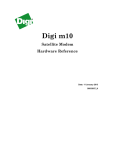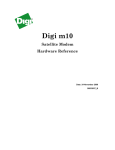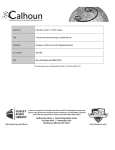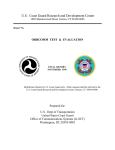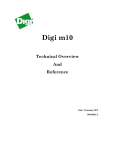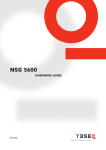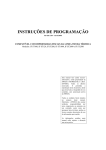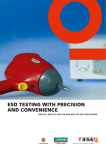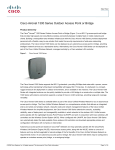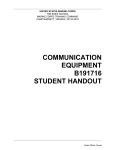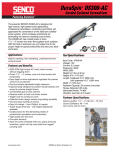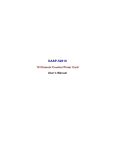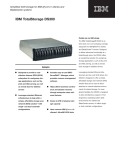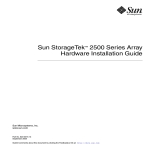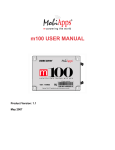Download DS300 User Manual v2..
Transcript
DS300 Satellite Communicator User Manual May 22, 2006 DS300 Users Manual May 22, 2006 Contents 1. Introduction ............................................................................................................................ 6 1.1 Purpose ................................................................................................................................. 6 1.2 Applicable Documents ........................................................................................................ 6 1.3 Industry Canada Warning: RSS210 ................................................................................. 6 2. General Overview.................................................................................................................. 7 2.1 General.................................................................................................................................. 7 2.2 Block Diagram...................................................................................................................... 7 2.3 Overview ............................................................................................................................... 8 3. Hardware ................................................................................................................................. 9 3.1 Power Management and Battery Charger ....................................................................... 9 3.1.1 External Power Technical Specifications ................................................................. 9 3.1.2 Operational Power Technical Specifications ........................................................... 9 3.1.3 Charger Technical Specifications ............................................................................ 10 3.2 Application Processor ....................................................................................................... 10 3.3 Digital and Analog I/O ....................................................................................................... 10 3.3.1 Digital Outputs ............................................................................................................ 11 3.3.2 Digital Inputs ............................................................................................................... 11 3.3.3 Analog Inputs .............................................................................................................. 11 3.4 GPS Receiver..................................................................................................................... 12 3.4.1 Operating Modes........................................................................................................ 12 3.4.2 Antenna Interface ....................................................................................................... 12 3.5 Application Processor Serial Interface ........................................................................... 13 3.6 Main Serial Interface ......................................................................................................... 13 3.6.1 CAN J1939 Interface ................................................................................................. 13 3.7 General PC Board Specifications ................................................................................... 13 3.7.1 Grounding.................................................................................................................... 13 3.7.2 Network Activity Indicators........................................................................................ 14 3.7.3 Message Buffer........................................................................................................... 14 3.8 Power Management .......................................................................................................... 14 3.9 Packaging and Connectors.............................................................................................. 16 3.9.1 Housing........................................................................................................................ 16 3.9.2 Mounting ...................................................................................................................... 16 3.9.3 Labeling ....................................................................................................................... 16 3.9.4 Connectors .................................................................................................................. 17 Stellar Document – Version 2.1c 21700 Atlantic Blvd • Dulles • Virginia 20166 • USA Telephone: (703) 433-6550 • Fax: (703) 433-6500 Page: 2 of 51 DS300 Users Manual 4. May 22, 2006 Installation and Operation ................................................................................................ 19 4.1 Quick Start .......................................................................................................................... 19 5. Environmental...................................................................................................................... 20 6. Regulatory............................................................................................................................. 21 7. Code Loading....................................................................................................................... 22 Network Processor ....................................................................................................................... 22 Application Processor .................................................................................................................. 22 8. Power Controls .................................................................................................................... 23 8.1 Atmel ........................................................................................................................................ 23 8.1.1 On...................................................................................................................................... 23 8.1.2 Power Saving .................................................................................................................. 23 8.1.3 Brownout1 ........................................................................................................................ 23 8.1.4 Brownout2 ........................................................................................................................ 23 8.2 GPS.......................................................................................................................................... 23 8.2.1 On...................................................................................................................................... 23 8.2.2 Stand By ........................................................................................................................... 23 8.2.3 Off...................................................................................................................................... 23 8.3 Network Process .................................................................................................................... 23 8.3.1 On...................................................................................................................................... 23 8.3.2 Sleep ................................................................................................................................. 23 8.3.3 Power saving ................................................................................................................... 23 8.3.4 Off...................................................................................................................................... 23 No external power supplied..................................................................................................... 23 9. Stellar Extended Packet Descriptions........................................................................... 25 9.1. Data Representation ......................................................................................................... 25 4-byte Floating-point Format ................................................................................................... 25 Little Endian format................................................................................................................... 26 Communications Command Extensions................................................................................... 26 Set Configuration (0x20,0x40).................................................................................................... 26 Get Configuration (0x21, 0x41) .................................................................................................. 32 Configuration Response (0x22) ................................................................................................. 33 SC Originated Messages List (0x23)......................................................................................... 34 SC Originated Message Summary (0x29)................................................................................ 36 SC Terminated Messages List (0x24)....................................................................................... 37 SC Terminated Message Summary (0x28) .............................................................................. 39 Stellar Document – Version 2.1c 21700 Atlantic Blvd • Dulles • Virginia 20166 • USA Telephone: (703) 433-6550 • Fax: (703) 433-6500 Page: 3 of 51 DS300 Users Manual May 22, 2006 Message Queue Command (0x25) ........................................................................................... 40 Debug Text (0x26)........................................................................................................................ 42 10. Message Sequence Charts............................................................................................... 43 10.1. Set Configuration Message Sequence Chart ............................................................ 43 10.2. Get Configuration Message Sequence Chart ........................................................... 43 11. SPI Serial ............................................................................................................................... 44 11.1. 12. SPI Operation ................................................................................................................. 44 Over-The-Air (OTA) Parameter Message Format ....................................................... 46 Appendix A: DS300 Data Sheet.................................................................................................. 48 Appendix B: Installation of Stelcomm...................................................................................... 49 Appendix C: GPS Performance................................................................................................. 50 C.1 TTFF (Time To First Fix) -- Cold Start the GPS ........................................................... 50 C.2 Cold Start First Position Fix Accuracy............................................................................ 50 C.3 Static Position Accuracy (24 hours test) ........................................................................ 50 C.4 Power Consumption.......................................................................................................... 51 C.5 Additional notes: ................................................................................................................ 51 Stellar Document – Version 2.1c 21700 Atlantic Blvd • Dulles • Virginia 20166 • USA Telephone: (703) 433-6550 • Fax: (703) 433-6500 Page: 4 of 51 DS300 Users Manual May 22, 2006 Figures Page Figure 1: DS300 Block Diagram .......................................................................................................7 Figure 2: Digital Output Circuit ........................................................................................................11 Figure 3: Digital Input Circuit ...........................................................................................................11 Figure 4: Analog Input Circuit..........................................................................................................11 Figure 5: Default Digital & Analog Input Timing ...........................................................................15 Figure 6: Housing Dimensions and Connector Locations ..........................................................16 Figure 7: DS300 Connectors...........................................................................................................17 Figure 8: Packet Data Types...........................................................................................................25 Figure 9: IEEE-754 Memory Layout...............................................................................................25 Figure 10: SC Originated Message Summary (for SC Originated Message List Packet) .....35 Figure 11: SC Terminated Message Summary (for SC Terminated Message List Packet) .38 Figure 12: SPI Interface Diagram ...................................................................................................44 Tables Table 1: Data/IO Connector.............................................................................................................18 Table 2: I/O Configuration Options.................................................................................................18 Table 3: Power Down States...........................................................................................................24 Table 4: Opcodes and Offsets ........................................................................................................31 Table 5: Message Queue Command Type Codes ......................................................................41 Table 6: Stellar Over-The Air Commands .....................................................................................46 Stellar Document – Version 2.1c 21700 Atlantic Blvd • Dulles • Virginia 20166 • USA Telephone: (703) 433-6550 • Fax: (703) 433-6500 Page: 5 of 51 DS300 Users Manual May 22, 2006 1. Introduction 1.1 Purpose The intended audiences for this manual include, but are not limited to, the DS300 customers, current Stellar ST2500 customers and ORBCOMM customers. The purpose of this manual is to provide the user with the data necessary to install, operate, and maintain the DS300 in order to meet the user’s requirements. 1.2 Applicable Documents The following documents have been referenced within this document and apply to its contents to the extent specified herein. Document No. Title E80050015 – Rev F ORBCOMM Serial Interface Specification TBD 1.3 Stellar Software Developers Guide Industry Canada Warning: RSS210 Industry Canada Radio Standards Specification 210 states the following: "The installer of this radio equipment must ensure that the antenna is located or pointed such that it does not emit RF field in excess of Health Canada limits for the general population; consult Safety Code 6, obtainable from Health Canada’s website www.hc-sc.gc.ca/rpb" Stellar Document – Version 2.1c 21700 Atlantic Blvd • Dulles • Virginia 20166 • USA Telephone: (703) 433-6550 • Fax: (703) 433-6500 Page: 6 of 51 DS300 Users Manual May 22, 2006 2. General Overview 2.1 General The DS300 Satellite Modem is a compact, lightweight, microprocessor based VHF transceiver capable of transmitting and receiving short messages by utilizing the ORBCOMM Satellite Communication System. The ORBCOMM system is a wide area, packet switched, two-way data communication system that utilizes constellations of low-earth orbiting satellites and earth station gateways. 2.2 Block Diagram The block diagram below shows the major subsystems of the DS300 External Power Battery Power Power Management and Battery Charger Power Switch Out RS485 Driver Control RS232 Driver Aux Serial Dig Out (≤12) Application Processor Dig In (≤12) Serial Link Ana In (≤4) SPI Main Serial RS232 Network Processor Figure 1: DS300 Block Diagram Stellar Document – Version 2.1c 21700 Atlantic Blvd • Dulles • Virginia 20166 • USA Telephone: (703) 433-6550 • Fax: (703) 433-6500 Page: 7 of 51 DS300 Users Manual May 22, 2006 2.3 Overview The DS300 product consists of 5 major subsystems (Network Processor, Application Processor, GPS Receiver, Modem and Power Management/Battery Charger). The Application Processor is a programmable micro-controller capable of hosting customer-written application software and is provided with control of and access to the various subsystems and interfaces. The application processor has centralized control of the DS300 product. It is operating whenever power is present on either the external or battery power lead. Application software (the embedded software application hosted on the application processor or 3rd party application, usually written by customers) has the ability to power on and off the various subsystems individually, including the GPS receiver, the RS232/RS485 driver circuit, digital I/O, analog inputs and the network processor. The GPS Receiver provides position solutions using the Global Positioning System and is optimized for low-power operation. The Network Processor hosts the ORBCOMM protocol software, named SC Core Software (SCCS), and is responsible for reliable transfer of messages to and from the DS300. The Modem provides RF signal transmission and reception, adhering to the ORBCOMM Air Interface specification. Note: The modem and the network processor are powered on and off as a single subsystem. The network processor controls the power mode functions of the modem. The external interfaces enable the DS300 to operate with many different types of power sources and connect to a diverse set of sensors and devices. In summary: • External Power: Either a full-time or part-time source of unregulated power between 9 and 30 VDC. • Battery Power: Clean power usually provided by a lead-acid battery that is charged when external power is present. • Switched Power Out: Power provided to an external device switched by a 3rd party application, up to 1 Amp @ battery voltage. If no battery is present, the voltage will track the external supply input up to 18 volts. • App RS485 Serial: Configurable as either 4-wire full-duplex or 2-wire half-duplex operation, available to the 3rd party application. Optional • App RS232 Serial: Simple 3-wire (TX, RX, GND) serial link available to the 3rd party application. • Digital Outputs: Capable of sourcing or sinking 6 mA at 3VDC, ESD protected with a current-limiting series resistor, controlled by 3rd party applications. • Digital Inputs: Capable of sourcing or sinking 6 mA at 3VDC, ESD protected with a current-limiting series resistor can interrupt or be read by 3rd party applications. • Analog Inputs: Range 0 – 3.3 V, 10 bit resolution, readable by the 3rd party applications. • Main Serial: For management of the device and communications using the standard ORBCOMM Serial Interface Specification and a few Stellar Enhancements. Stellar Document – Version 2.1c 21700 Atlantic Blvd • Dulles • Virginia 20166 • USA Telephone: (703) 433-6550 • Fax: (703) 433-6500 Page: 8 of 51 DS300 Users Manual May 22, 2006 3. Hardware The following sections in this chapter provide the customer-level hardware, performance and operational requirements. 3.1 Power Management and Battery Charger The DS300 can be powered in many different ways. This versatility enables the product to be used in a wide variety of applications without peripheral custom hardware, yielding both a cost savings and shorter development period. There are two sets of leads within the power interface, referred to as external power and battery power. The primary source of power, with regard to the supply of current, must be connected to the battery input. Note: The manufacturer requires a 5 Amp fuse installed inline with the External Power input and inline with the Battery Power input. The external power input is used to provide a source of power to charge a battery, with the battery connected to the battery lead. The external power lead can accept between 9 and 30 VDC, while the battery power lead can accept between 8 and 16 VDC. The external power lead has filtering as well, enabling it to better handle unregulated noisy power sources and voltage spikes. The battery power lead is designed to connect to a clean power source like a lead-acid or primary battery, as it has no filtering and cannot tolerate voltage spikes. 3.1.1 External Power Technical Specifications • Input Voltage: 9 - 30 VDC (Operational). The application processor software will shutdown the system if voltage is outside this range and the battery is not present to help prevent circuit damage. • The manufacturer requires a 5 Amp fuse be used on the External Power Input. • Reverse Voltage: -24V for 5 minutes. • Over Voltage: 48V for 5 minutes. • Power Load dump: Transient signal reaching 100V with a rise time of less than 100 milliseconds then decaying according to the equation 14 + 86e(-t/0.4) driven through a source impedance of 0.4 ohm. This transient over-voltage pulse “load dump” is similar to SAE J1455 section 4.11.2.2.1. • Power Line: 14V signal modulated with 50 Hz to 10 kHz; 7.5 Vp-p; sine, triangle and square swept at 200 Hz /s. • Required current for transmit drawn from both external and battery power, with current drawn from external power up to current limit before any current is drawn from battery power. • Current limited to 1.3A, to prevent overdrawing the external power source. • Drops in voltage below the normal operating range, if too long or severe to sustain normal operations, shall result in a reset of the DS300 and a return to normal operations within 50 ms following the return of the voltage to normal operating range. • A slow rise in voltage from an off state, no matter the rate of change, shall result in normal operation once the voltage reaches normal operating range. • Voltage readable by application processor, 10-bit A/D, accurate to within 0.1 V of the true value. 3.1.2 Operational Power Technical Specifications • Input Voltage: 8 – 16 VDC (for 10 Watts EIRP) • The manufacturer requires a 5 Amp fuse be used on the Battery Power Input. • Reverse Voltage: -16V for 1 minute. • Over Voltage: 16 VDC (i.e. no protection against over voltage) Stellar Document – Version 2.1c 21700 Atlantic Blvd • Dulles • Virginia 20166 • USA Telephone: (703) 433-6550 • Fax: (703) 433-6500 Page: 9 of 51 DS300 Users Manual • • • • • • • 3.1.3 May 22, 2006 ESD: Minimal protection (designed for a clean, regulated power source) System average sleep current nominally 50uA @ 12V, maximum 100 uA @ 12V. Drops in voltage below the normal operating range, if too long or severe to sustain normal operations, shall result in a reset of the DS300 and a return to normal operations within 50 ms following the return of the voltage to normal operating range. Input ripple is limited to ±200 mVDC. Combined Input Voltage and Ripple shall not exceed the values specified for ‘Input Voltage’ listed above. A slow rise in voltage from an off state, no matter the rate of change, shall result in normal operation once the voltage reaches normal operating range. Voltage readable by application processor, 10-bit A/D, accurate to within 0.1 V of the true value Power source can be any regulated power supply or battery which meets the above requirements. Charger Technical Specifications • Battery voltage 8 or 12 VDC, lead acid, set by software configuration. • Charging occurs only when external power is present and is nominally 3V greater than battery voltage. • Charging modes of cyclic and float • Default operation is optimized for Hawker DT 4.5 A-h 2V Cells, arranged in 2 x 4 pack yielding 8VDC, 9 A-h. The application processor software controls the optimal charging rate for the selected battery. • Charging profile can be modified for other battery types • Available onboard temperature sensor used to further optimize charging modes. • Radiated emissions within requirements in ORBCOMM SC Standards & Specifications. 3.2 Application Processor The application processor is the Atmel MEGA 128 product, model Atmega128L, a low-power 3.3V CMOS 8-bit micro-controller based on RISC technology. It is equipped with 128K of flash memory, 4K RAM, 4K EEPROM, SPI serial interface, two serial USARTS and programmable watchdog timer. The Switched Power Out enables powering an external device. The output can be switched on/off by the 3rd party application, and sources a current of up to 1A at a voltage just below the battery voltage (protection circuitry causes a slight reduction in voltage). If no power source is present on the battery lead then the Power Switch Out voltage is sourced from the external power lead, but held to a maximum value of 18V. 3.3 Digital and Analog I/O All Atmel ports have true Read-Modify-Write functionality when used as general digital I/O ports. This means that the direction of one port pin can be changed without unintentionally changing the direction of any other pin. The same applies when changing drive value (if configured as output) or enabling/disabling of pull-up resistors (if configured as input). Each output buffer has symmetrical drive characteristics with both high sink and source capability. All port pins have individually selectable pull-up resistors with a supply-voltage invariant resistance. All I/O pins have two internal ESD protection diodes: one from the pin to Vcc and one from GND to the pin. Each Atmega128L I/O pin can sink 10 mA or source 10 mA. However an aggregate limit exists over simultaneous sink and source currents across a given Atmel port (up to 8 pins), therefore consideration must be given to the port and pin combinations selected for digital I/O in the actual design. Stellar Document – Version 2.1c 21700 Atlantic Blvd • Dulles • Virginia 20166 • USA Telephone: (703) 433-6550 • Fax: (703) 433-6500 Page: 10 of 51 DS300 Users Manual May 22, 2006 3.3.1 Digital Outputs The Atmel pins PB4 (DOUT1) through PB7 (DOUT4) are used for the four digital outputs. Series resistors serve to limit the current to a safe level in the event of ESD or if the output is externally connected to 5V (6V is the absolute maximum) or GND but driven to the opposite. When sourcing 1 mA, each output provides 2.5V minimum, 3.2V maximum. Note that the outputs can also be used as inputs with appropriate coding of the Atmel. 220 ohms 220 ohms Atmel 1000 pF 0.1 uF Figure 2: Digital Output Circuit Each of the four digital outputs is connected to four available Atmel pins through high-value resistors to enable application software sensing of the state of the output. This feature enables single wire implementation of a contact closure, where one contact terminal is connected to (chassis) ground and the other contact terminal connected to the digital output. 3.3.2 Digital Inputs Series resistors and capacitors are used to limit current sourcing / sinking in the event of ESD and other transients. Each input will survive a short to a 5V supply, with 6V as the absolute maximum. The minimum guaranteed voltage for the Application Processor to read the input as high is 2.2V. The inputs can also be used as outputs with appropriate coding of the Atmel. 220 ohms 220 ohms Atmel 1000 pF 0.1 uF Figure 3: Digital Input Circuit 3.3.3 Analog Inputs The analog inputs have a minimum range of 0 to 3.0 V, with 10-bit resolution. The circuitry provides additional ESD protection and a 10 kΩ resistor, as shown below: 10K ohms Atmel 1000 pF 1000 pF Figure 4: Analog Input Circuit The upper end of the range, which identifies the analog of the maximum digital representation, is provided as an output on the Data/IO connector (see AVref in Table 1: Data/IO Connector). This Stellar Document – Version 2.1c 21700 Atlantic Blvd • Dulles • Virginia 20166 • USA Telephone: (703) 433-6550 • Fax: (703) 433-6500 Page: 11 of 51 DS300 Users Manual May 22, 2006 output is provided only as a reference and cannot be used by the application to source power to a sensor. If needed, a suitable current amplifier circuit will be required. The A/D measurement error observed by the application, including quantization error, is expected to be about 1% if the AT_Vref and I/O Ground connections are used by the application. If the AT_Vref and the I/O Ground are not used as a reference voltage for external A/D measurements, the reading error could approach 50%. This is because the voltage variation for the power supply inside the unit can vary +/- 0.3 V and if proper ground isolation is not used the ground offsets could reach as high as +/- 0.5 V. 3.4 GPS Receiver The GPS receiver is to be optimized for low power applications, providing minimal power consumption and time to first fix (TTFF) under cold start conditions. However in some applications the GPS receiver is operated continuously, under control of the 3rd party application, with anticipated increased position solution accuracy. Operating requirements are as follows: • Power Consumption: 240 mW typical, 250 mW maximum. • Cold Start TTFF: < 75 seconds @ 95% success rate. • Cold Start Accuracy: 99% < 10 meters. • Message Format: Minimum NMEA GGA, VTG, GSV, GSA, GLL and ZDA message types at 9600 baud rate, No Parity, 8 bit ASCII and 1 stop bit. • Information: location, speed, heading and time. • Information Rate: Each message type sent once per second by default, changeable by command. The cold start performance listed above is achievable when the application processor initializes the GPS receiver with UTC time and the most recent latitude and longitude solution. Further improvement in cold start performance is possible if the almanac is loaded in the GPS receiver as well. 3.4.1 Operating Modes The selected GPS receiver design continuously maximizes the number of locked satellites to improve the accuracy of the position solution. The application processor may power the GPS receiver continuously or it may power it down once a position solution is provided. Prior to power down, the application will store the most recent position solution then send the same to the GPS receiver following the next power-up, to aid cold start TTFF. The GSV NMEA message must accurately report the number of locked satellites and other quality measures available such as PDOP, such that the 3rd party application can infer the quality of the current position result. Alternatively, if the GSV NMEA message is not provided, the GPS receiver must be able to be commanded to operate in the following modes: • 2D/3D Automatic: The position solution can be of type 2D, though the GPS receiver provides 3D position solutions when possible. • 3D Only: A position solution is provided to the application processor only if it is of the 3D type (latitude, longitude, altitude) using a minimum of 4 GPS satellites. In addition, the GPS receiver shall be able to detect an open or short circuit condition on the active GPS antenna, and report this anomalous condition via its serial port to the application processor. Note: It is expected that the application processor is equipped with a GPS pass thru mode, whereby the application RS232/RS485 serial link is directly connected to the GPS receiver. In this mode an external device may take advantage of any available native capabilities of the GPS receiver. 3.4.2 Antenna Interface A commercially available active GPS antenna is used in customer applications, having a gain of between 6 and 32 dB (including cable loss). At the DS300 GPS antenna port, the interface specification is as follows: • Input Impedance: 50 Ω Stellar Document – Version 2.1c 21700 Atlantic Blvd • Dulles • Virginia 20166 • USA Telephone: (703) 433-6550 • Fax: (703) 433-6500 Page: 12 of 51 DS300 Users Manual • • • • • • May 22, 2006 VSWR: 2.0 maximum Output Voltage: 2.7 to 3.6 VDC Output Power: 4 to 30 mA operating Antenna Disconnect Sensing: < 4 mA triggers antenna open circuit alert Antenna Short Sensing: > 30 mA triggers antenna short circuit alert ESD: ± 8 KV 3.5 Application Processor Serial Interface The application processor has a single serial interface available to users, software configurable as RS232, RS485 2-wire half duplex or RS485 4-wire full duplex. The baud rates, stop bits, etc. are as follows (all software configurable): • Baud Rate: 4800 and 9600 bps • Stop Bits: 0, 1, 2 • Parity Bits: odd, even, none Note: The DS300 PCB is constructed to accommodate the RS485 interface option. Network Processor Serial Interface The network processor has two serial interfaces available to the user, the main serial and the CAN bus. The main serial interface is used for device management and for communications with external controllers using the standard ORBCOMM serial interface. 3.6 Main Serial Interface The main serial interface adheres to the ORBCOMM Serial Interface protocol using standard RS232 voltage levels. Serial data is carried on the Transmit (TX) and Receive (RX) lines. One control line is available, Carrier Detect (CD), as an output from the DS300 signaling the availability of a satellite connection. The specifications are as follows (all are software configurable): • Baud Rate: 300 bps to 19200 bps • Stop Bits: 0, 1, 2 • Parity Bits: odd, even, none Any change in baud rate will not take effect until the DS300 is reset (either warm or cold boot). The CD RS232 control line is activated whenever the SC has locked to an ORBCOMM satellite downlink, and has received the requisite link and network control information provided in the uplink and downlink channel information packets and the gateway information packet. The main serial also supports a command mode for configuring the DS300 and for firmware loads. StelComm provides this command mode function, which is Stellar’s graphical user interface hosted on PCs running the Microsoft Windows operating system. 3.6.1 CAN J1939 Interface Not available in the current product. Contact Stellar for more information. 3.7 General PC Board Specifications 3.7.1 Grounding For best EMC practices, all connector grounds are tied together inside the unit. The case and RF grounds are also connected to the board ground. Breakdown of the ground connections found on the connectors: • There is a ground connection for the external supply. A ground wire must be attached to this connection if the external supply is used. Stellar Document – Version 2.1c 21700 Atlantic Blvd • Dulles • Virginia 20166 • USA Telephone: (703) 433-6550 • Fax: (703) 433-6500 Page: 13 of 51 DS300 Users Manual May 22, 2006 • There is a ground connection for the battery supply. A wire must be attached between this connection and the negative side of the battery or clean supply. • There is a ground for the communication lines. This ground connection is only provided as a cleaner ground connection between the DS300 and the other devices and may not be required in all applications. The external supply ground could also be used as the ground connection. • There is a ground connection for the I/O lines. This ground connection provides a ground reference to the external devices. This connection will be needed to provide accurate A/D conversions. The case for the unit is attached to the board ground. This is done for EMC purposes. If the case is attached to metal that is connected to the external supply ground, then DC currents will flow through the case. If this is not desired, then the DS300 should be isolated from any connections to the external ground. RF ground shield connections are attached to the common board ground. 3.7.2 Network Activity Indicators Two illuminating indicators are to be located on the case, driven by the Network Processor, to indicate certain network level events. The first Illuminates in amber color while there is a message in the outbound buffer, waiting to be transmitted to the network. The second provides network activity as follows: • Flashes red while the unit is searching for a satellite downlink. • Illuminated green once a downlink is captured. • Blinks off green when a transmission attempt is made, for roughly the duration of the transmission. Provision is made for the application processor to control each indicator behavior through software commands to the network processor. Regardless of the current mode of control (by application or network processor), upon cold start the indicators blink in unison at approximately twice per second rate for duration of two seconds (four on/off cycles). Regardless of the present mode of control (by application or network processor), upon awakening from sleep, when the application processor powers the network processor, the indicators blink in an alternating fashion, at approximately twice per second rate for a duration of two seconds (four on/off cycles per indicator). 3.7.3 Message Buffer The DS-300 is to be equipped with a minimum message buffer size of 128K for holding both SCTerminated and SC-Originated messages. 3.8 Power Management The application processor controls the power of the various subsystems. This includes the charging circuit, GPS receiver, the network processor and modem (combined), the serial line drivers and the digital and analog I/O. This high degree of control is needed to enable very low power modes, thus reducing battery and external power requirements. External signal activity (on the main RS232 serial port, application RS232 serial port or application RS485 serial port receive lines) triggers an interrupt to the Application Processor, even when the RS232 or RS485 line driver is in low-power mode. The Application Processor receives the interrupt and powers the appropriate line driver device and subsystem in order to begin receiving the information bytes. A buffer-save mode is available, initiated by software command from the Application Processor, to power down the Network Processor but preserve any messages held in its queue. This mode is normally invoked when SC-Originated messages are queued but the SC has been unable to locate Stellar Document – Version 2.1c 21700 Atlantic Blvd • Dulles • Virginia 20166 • USA Telephone: (703) 433-6550 • Fax: (703) 433-6500 Page: 14 of 51 DS300 Users Manual May 22, 2006 a satellite for an extended period, or if SC-Terminated messages are queued but the equipment user has delayed connecting for message retrieval for an extended period. Low-power sleep mode down to less than 50 uA average current draw is achieved by operating only the application processor while monitoring all digital inputs at a rate of eight times per second and all analog inputs once per second. Most any other scenario is possible, for example sampling a single digital input at a high rate, by appropriate 3rd party application coding. A timing chart is shown below, with approximated current draw while sampling all digital and analog inputs. 2.4 ms max 300 us max 4 mA 2 mA 30 uA 128 ms 1 Second Figure 5: Default Digital & Analog Input Timing Stellar Document – Version 2.1c 21700 Atlantic Blvd • Dulles • Virginia 20166 • USA Telephone: (703) 433-6550 • Fax: (703) 433-6500 Page: 15 of 51 DS300 Users Manual 3.9 May 22, 2006 Packaging and Connectors 3.9.1 Housing The housing for the DS300 meets the specified environmental requirements, providing a sealed enclosure for the electronics. The dimensions of the DS300 are provided below. Figure 6: Housing Dimensions and Connector Locations 3.9.2 Mounting The mounting facilities must be adaptable to shock mounts using additional mounting brackets and hardware. Case mounting is possible using ¼” bolts with clearance for typical ½” socket wrench. 3.9.3 Labeling A label identifying the unit serial number (including 128 bar code format) and regulatory approvals is affixed to a side facing of the housing, visible when mounted in typical installations. Stellar Document – Version 2.1c 21700 Atlantic Blvd • Dulles • Virginia 20166 • USA Telephone: (703) 433-6550 • Fax: (703) 433-6500 Page: 16 of 51 DS300 Users Manual May 22, 2006 3.9.4 Connectors Three connectors are located on the DS300 Communicator (GPS, VHF and Data/IO). • Two FAKRA SMB RF connectors; a rugged locking keyed connector suitable for the expected environment and installation constraints. • A Data/IO 36 pin positive locking connector (two rows of 18 pins), which seals the connector shell to the case. See Table 3 for configuration details. GPS RF: FAKRA SMB C Code key (blue color), keyed, 50 Ω Data/IO Connector, 36 pins VHF RF: FAKRA SMB D Code key (violet color), keyed, 50 Ω Figure 7: DS300 Connectors Stellar Document – Version 2.1c 21700 Atlantic Blvd • Dulles • Virginia 20166 • USA Telephone: (703) 433-6550 • Fax: (703) 433-6500 Page: 17 of 51 DS300 Users Manual Pin # 1 2 3 4 5 6 7 8 9 10 11 12 13 14 15 16 17 18 May 22, 2006 Description External Power 1.3 Amps See Note below Battery Power See Note below Battery Power Ground External Power 5 Amps (Not Connected) Switched Power Out (1 Amp max) Input/Output #0 (Analog & Digital) Input/Output #2 (Analog & Digital) Main Serial Ground Main Serial TX Data Application RS232 TX Data Application RS232 RX Data Application RS485 TX1 Application RS485 TX2 Unused Input/Output #4 (Digital only) Input/Output #6 (Digital only) Input/Output #8 (Digital only) Input/Output #10 (Digital only) Pin # 19 20 21 22 23 24 25 26 27 28 29 30 31 32 33 34 35 36 Description External Power Ground Battery Power See Note below Battery Power Ground AT_Vref (3.3 V) Switched Power Ground Input/Output #1 (Analog & Digital) Input/Output #3 (Analog & Digital) Analog Ground Main Serial CD Main Serial RX Data No Connection RS485 RX1 RS485 RX2 Unused Input/Output #5 (Digital only) Input/Output #7 (Digital only) Input/Output #9 (Digital only) Input/Output #11 (Digital only) Table 1: Data/IO Connector Note: the manufacturer requires the user to install (one each) 5 Amp fuses inline with the External Power (Pin 1) and inline with the Battery Power (Pin 2) connections. If both Pin 2 and Pin 20 are used for Battery Power a single fuse is used. Table #2 below identifies the default configuration of the 12 I/O s and whether the I/O accepts Analog and Digital or just Digital data. The Input/Output Mode can be changed by a third party application, Over the Air (OTA) Command and Stelcomm. Input/Output # Type Default Mode 0 1 2 3 4 5 6 7 8 9 10 11 Analog and Digital Analog and Digital Analog and Digital Analog and Digital Digital Only Digital Only Digital Only Digital Only Digital Only Digital Only Digital Only Digital Only Analog Input #1 Analog Input #2 Analog Input #3 Analog Input #4 Digital Input #1 Digital Input #2 Digital Input #3 Digital Input #4 Digital Output #1 Digital Output #2 Digital Output #3 Digital Output #4 Table 2: I/O Configuration Options Stellar Document – Version 2.1c 21700 Atlantic Blvd • Dulles • Virginia 20166 • USA Telephone: (703) 433-6550 • Fax: (703) 433-6500 Page: 18 of 51 DS300 Users Manual May 22, 2006 4. Installation and Operation 4.1 Quick Start After mounting the unit, its operation can be tested by using the procedure described below. 1. Connect the Data/IO connector to the DS300. It is keyed and can only be inserted in one direction. Attach the power source and serial connections to the opposite end of the Data/IO cable. 2. Connect the VHF and GPS antenna cables to the Fakra RF connectors. Each connection is color-coded and keyed, preventing cross connection of the RF connectors. 3. Start the Stelcomm V3 software and select the Status screen. The status message at the bottom of the window will indicate if the serial port is active and the modem is responding. If the user does not have Stelcomm V3 loaded on the computer then go to Appendix B and follow the instructions for downloading and installing Stelcomm V3. 4. Once a satellite passes over head the Status screen will update. The Status button can be selected to request an immediate update. Note: the manufacturer requires the user to install (one each) 5 Amp fuses inline with the External Power (Pin 1) and inline with the Battery Power (Pin 2) connections. If both Pin 2 and Pin 20 are used for Battery Power a single fuse is used. Stellar Document – Version 2.1c 21700 Atlantic Blvd • Dulles • Virginia 20166 • USA Telephone: (703) 433-6550 • Fax: (703) 433-6500 Page: 19 of 51 DS300 Users Manual May 22, 2006 5. Environmental The minimum environmental requirements for the DS300 are provided in the SC Standards & Specifications document. The requirements below reflect the needs of known applications where the DS300 is well suited functionally. • • • • • • • • • • • • Operating Temperature: -40°C to +85°C Storage Temperature: -50°C to +85°C Vibration: SAEJ1455 – 2.39Grms, 10-500Hz, 3-axis Shock: SAEJ1455 Humidity: 95% relative humidity at 40°C Salt Fog: 5% solution Pressure Wash: MIL SPEC 506.1 Dust Exposure: SAEJ726B Altitude: 9 PSI/-10°C Radiated Emissions: EN 300 721 Electrostatic Discharge: SAEJ1113/13 - ±4,6,8kV; direct ±8,15kV air Electrical Interference: SAEJ1113/12 Stellar Document – Version 2.1c 21700 Atlantic Blvd • Dulles • Virginia 20166 • USA Telephone: (703) 433-6550 • Fax: (703) 433-6500 Page: 20 of 51 DS300 Users Manual May 22, 2006 6. Regulatory The DS300 shall meet the minimum requirements for regulatory approval in the United States, Canada and Europe. Stellar has received the following approvals: Type Approval Number Designation ORBCOMM 300DSC 300DSC EN 301-721 1317 ETSI EN 301-489-20 Industry Canada IC:2797B-300DSC IC:2797B-300DSC Mexico Homologation RCSSTDS05-301 COFETEL Certificado de Homologacion No.RCSSTDS05-301 Japan TELEC 005AYAA0007 R 005AYAA0007 Stellar Document – Version 2.1c 21700 Atlantic Blvd • Dulles • Virginia 20166 • USA Telephone: (703) 433-6550 • Fax: (703) 433-6500 Page: 21 of 51 DS300 Users Manual May 22, 2006 7. Code Loading Network Processor The Network Processor Image can be updated through Stelcomm. The latest version can be found at www.stellar-sat.com/Download Stelcomm must be up/running and connected to the unit prior to uploading software. From the main Stelcomm screen, select Firmware menu at the Tool bar at the top of the screen. Select the menu item ‘Upload Network Processor Image’. A dialog box will appear. Choose the location and file and then the Open button. 6. The process should run for a few minutes and then reset the modem. 1. 2. 3. 4. 5. Application Processor The Application Processor Image can be updated through Stelcomm. The application developer will be responsible for providing the latest version image. Stelcomm must be up/running and connected to the unit prior to uploading software. From the main Stelcomm screen, select Firmware menu at the Tool bar at the top of the screen. Select the menu item ‘Upload Network Processor Image’. A dialog box will appear. Choose the location and file and then the Open button. 6. The process should run for a few minutes and then reset the modem. 1. 2. 3. 4. 5. Stellar Document – Version 2.1c 21700 Atlantic Blvd • Dulles • Virginia 20166 • USA Telephone: (703) 433-6550 • Fax: (703) 433-6500 Page: 22 of 51 DS300 Users Manual 8. May 22, 2006 Power Controls 8.1 Atmel 8.1.1 On All subsystems are powered and available. 8.1.2 Power Saving Wake up on Main and Aux serial port communication, digital IO, internal timer. This will utilize the Atmel Power Save mode. The unit will wake up 8 times each second to check all IO lines. The unit will also power up when there is activity on the main or aux serial ports. When there is activity on the serial ports, the Atmel must determine whether to wake up the Network Processor. 8.1.3 Brownout1 Minimize all power consumption on the SC. Utilize the Atmel Power Down mode. Maximize the delay of the interrupt timer. Exists when the battery power is below TDB and no external power is present. Wake up when external power is present. 8.1.4 Brownout2 Reduce all power consumption on the SC. Utilize the Atmel Power Save mode. Maximize the delay of the interrupt timer. Exists when the battery power is below TDB and no external power is present. Wake up when external power is present or the battery voltage is above TBD. The unit will have to wake up periodically (Timer0) and check the voltage level of the battery. 8.2 GPS 8.2.1 On GPS on all the time 8.2.2 Stand By GPS receiver RAM remains powered. This maintains the current Almanac and satellite ephemeris data. 8.2.3 Off No power supplied to the GPS 8.3 Network Process 8.3.1 On Power on all the time 8.3.2 Sleep Maintains the power to RAM and PC. Must maintain on inbound and outbound queued messages. 8.3.3 Power saving DL 6/16 frames (0x3a) 8.3.4 Off No external power supplied Stellar Document – Version 2.1c 21700 Atlantic Blvd • Dulles • Virginia 20166 • USA Telephone: (703) 433-6550 • Fax: (703) 433-6500 Page: 23 of 51 DS300 Users Manual ON x x x x x x x x x x x x May 22, 2006 Atmel PS BO #1 BO #2 ON x x x v850 PS Sleep OFF x x x x x x x x x OFF x x x x x x ON x GPS Standby x x x x x x x x x x x x x x x x x Table 3: Power Down States Stellar Document – Version 2.1c 21700 Atlantic Blvd • Dulles • Virginia 20166 • USA Telephone: (703) 433-6550 • Fax: (703) 433-6500 Page: 24 of 51 DS300 Users Manual May 22, 2006 9. Stellar Extended Packet Descriptions The serial interface utilizes the ORBCOMM Serial Interface Specification (E80050015-Rev F) and the Stellar Extended Serial packet types defined in this section. The Stellar Extended Serial packets allow the user to: • Manage (add and delete) SCT and SCO message queues • Request performance and message statistics • Control LED • Prepare for power down • HW and SW version information 9.1. Data Representation The information carried by the serial interface packets is a subset of common “C” data types, having a maximum size of 32 bits. The bytes are packet “little Endian”, meaning the least significant byte is placed first in the 4-byte information field. Data Type Bytes Range Notes char 1 0 to 255 short 2 15 -2 to 2 -1 long 4 -231 to 231-1 float 4 ± 1.18E-38 to ± 3.39E+38 ASCII text Variable unsigned 15 Application processor does not have type double Used for anything that requires ASCII text Figure 8: Packet Data Types 4-byte Floating-point Format Floating-point values are represented by 4-byte numbers in standard IEEE-754 format; float and double values have the same representation. Floating-point values below the smallest limit will be regarded as zero, and overflow values gives undefined results. The memory layout of 4-byte floating-point numbers is: 31 30 S 23 Exponent 22 0 Mantissa Figure 9: IEEE-754 Memory Layout The value of the number is: (-1)S * 2(Exponent-127) * 1.Mantissa Zero is represented by 4 bytes of zeros. The precision of the float operators (+, -< *, and /) is approximately 7 decimal digits. Stellar Document – Version 2.1c 21700 Atlantic Blvd • Dulles • Virginia 20166 • USA Telephone: (703) 433-6550 • Fax: (703) 433-6500 Page: 25 of 51 DS300 Users Manual May 22, 2006 Little Endian format Little Endian indicates that the least significant bytes occur before the most significant bytes. In a two byte integer or short integer, the first byte is the least significant byte and the second byte is the most significant byte. For conversion samples see below: To convert a two byte array into an “Little Endian” short integer: Short int = b[0] + (b[1]<<8); To convert a four byte array into an “Little-Endian” long integer: Long int = b[0] + (b[1]<<8) + (b[2]<<16) + (b[3]<<24); Communications Command Extensions Type Code 70 Definition Value Desired Response Reset unit 0x3019505 --------- Set Configuration (0x20,0x40) The Opcode and Offset values are defined in Table 4 (Page 27) 7 6 5 4 3 2 1 0 0 1 2 3 4 5 6 7+i 8+i 0x86 Packet header byte 0x20/0x40 Length byte 0 Length byte 1 Seq Num Opcode Offset Value byte 0 Value byte 1 Value byte 2 . Packet type Packet length starting with byte 0, includes checksum Packet Sequence Number See Table 4 (Page 27) See Table 4 (Page 27) Can be one of four data types, packed “littleEndian” or ASCII text. Value byte i -1 Check byte 0 Check byte 1 Fletcher Checksum Stellar Document – Version 2.1c 21700 Atlantic Blvd • Dulles • Virginia 20166 • USA Telephone: (703) 433-6550 • Fax: (703) 433-6500 Page: 26 of 51 DS300 Users Manual May 22, 2006 Data Format Opcode Offset Description 10 0 DSP Version/software ID Get 10 11 RF frequency Get 10 12 Eb/No Get 0.00 - 20.00 15 0 Get NA 15 1 NP Version/software ID Board Version or Manufacturer number ASCII float(4 bytes) float(4 bytes) ASCII Get NA ASCII 15 2 NP checksum Get NA 15 10 OTA password Set 3 bytes ASCII or 000 to clear 15 28 Power Down notification Set 0=off,1=Sleep 15 38 Number of dirty restarts Get 15 39 Number of clean restarts 15 40 15 41 15 42 15 43 15 44 Number of SCO messages Get 15 45 Number of SCT messages Get 15 46 15 50 Main LED Control Mode Both 0=NP Controlled, 1=Externally Controlled 15 51 LED 1 Control (amber LED) Set 0=off, 1=On 15 52 LED 2 Control (red/green LED) Set 0=off, 1=Red On, 2=Green On 15 70 100 0 Atmel Version/software ID Get 6 bytes ASCII 100 1 Atmel checksum Get long 100 200 Both 1=on, 0=off. Turns on global debug messages. 100 202 Both 1=on, 0=off Number of Sync Segments since last reboot Number of Acquire burst(s) since last reboot Number of Communicator burst(s) since last reboot Seconds in receive mode Since Last reboot Data Range long (4 bytes) 3 bytes char (1byte) Number of resets without sending power down notification Number of resets with sending Get power down notification Get 0 - 4,294,967,295 Get Total number of acquire bursts Tx by the unit since last reset Get 0 - 4,294,967,295 Get 0 - 4,294,967,295 Average time (seconds) of SCO Get Messages in the queue Default Time to Live (in seconds) Both for SC-O messages Application Processor Global Debug Settings Battery Charger Application Debug Setting ASCII Number of outgoing messages/reports via satellite since last reset Number of incoming messages via satellite since last reset 0 - 4,294,967,295 0 - 4,294,967,295 Stellar Document – Version 2.1c 21700 Atlantic Blvd • Dulles • Virginia 20166 • USA Telephone: (703) 433-6550 • Fax: (703) 433-6500 long(4 bytes) long(4 bytes) long(4 bytes) long(4 bytes) long(4 bytes) short(2 bytes) long(4 bytes) char (1byte) char (1byte) char (1byte) long(4 bytes) 6 bytes ASCII long(4 bytes) char (1byte) char (1byte) Page: 27 of 51 DS300 Users Manual May 22, 2006 100 204 Position Report Application Debug Setting Both 101 0 Battery Voltage Get 101 1 External Power Voltage Get 101 2 Ambient Case Temperature Get 101 3 Battery Charger Temperature Get 101 4 Digital Outputs Set 101 4 Digital Outputs Get 101 5 Analog Voltage Reference Both 101 6 Digital Inputs Get 101 7-10 Analog Inputs Get 101 11 IO_Direction 101 12 IO_Type 101 13 Setup IO 101 20 Digital IO Counter 0 101 21 Digital IO Counter 1 101 22 Digital IO Counter 2 101 23 Digital IO Counter 3 101 24 Digital IO Counter 4 101 25 Digital IO Counter 5 101 26 Digital IO Counter 6 101 27 Digital IO Counter 7 101 28 Digital IO Counter 8 char (1byte) 1=on, 0=off float(4 bytes) float(4 0-36 volts bytes) float(4 -40 to 100 celcius bytes) float(4 -40 to 100 celcius bytes) Byte 0 = IO (0-11). Byte 1 = Value short(2 (1=high,0=low) bytes) I/O 0 is bit 0 (lsb), I/O 2=bit 1, I/O short(2 3=bit 2, I/O 4=bit 3 etc. (1=set, bytes) 0=not set). float(4 3.30 to 3.50 byte) I/O 0 is bit 0 (lsb), I/O 1=bit 1, I/O short(2 2=bit 2, I/O 4=bit 3 etc. (1=set, bytes) 0=not set). 0-16 volts 0-1023: returns 0xFFFF if the IO is not set up as an analog input short(2 bytes) bit 0(lsb) = I/O 0, bit 1= I/O 1 etc. If a bit is set then the I/O is set as short(2 Get an output, if a bit is cleared then bytes) it's an input. bit 0(lsb) = I/O 0, bit 1= I/O 1 etc. Either analog or digital. Only I/Os char Get 0-3 can be set as an analog input. (1byte) 1=analog, 0= digital byte 0 (LSB) = IO, Byte 1 = direction & type (0= digital input short(2 Set w/pull up resistor, 1=digital output, bytes) 2=analog input, 3=digital input w/o pull up resistor) long(4 Get 0-4,294,967,295 bytes) long(4 Get 0-4,294,967,295 bytes) long(4 Get 0-4,294,967,295 bytes) long(4 Get 0-4,294,967,295 bytes) long(4 Get 0-4,294,967,295 bytes) long(4 Get 0-4,294,967,295 bytes) long(4 Get 0-4,294,967,295 bytes) long(4 Get 0-4,294,967,295 bytes) Get 0-4,294,967,295 long(4 Stellar Document – Version 2.1c 21700 Atlantic Blvd • Dulles • Virginia 20166 • USA Telephone: (703) 433-6550 • Fax: (703) 433-6500 Page: 28 of 51 DS300 Users Manual May 22, 2006 101 29 Digital IO Counter 9 Get 0-4,294,967,295 101 30 Digital IO Counter10 Get 0-4,294,967,295 101 31 Digital IO Counter 11 Get 0-4,294,967,295 101 32 Digital IO Counter 0 Mode Both Byte 0 =counter mode 101 33 Digital IO Counter 1 Mode Both Byte 0 =counter mode 101 34 Digital IO Counter 2 Mode Both Byte 0 =counter mode 101 35 Digital IO Counter 3 Mode Both Byte 0 =counter mode 101 36 Digital IO Counter 4 Mode Both Byte 0 =counter mode 101 37 Digital IO Counter 5 Mode Both Byte 0 =counter mode 101 38 Digital IO Counter 6 Mode Both Byte 0 =counter mode 101 39 Digital IO Counter 7 Mode Both Byte 0 =counter mode 101 40 Digital IO Counter 8 Mode Both Byte 0 =counter mode 101 41 Digital IO Counter 9 Mode Both Byte 0 =counter mode 101 42 Digital IO Counter 10 Mode Both Byte 0 =counter mode 101 43 Digital IO Counter 11 Mode Both Byte 0 =counter mode 102 0 Seconds Since Last reboot Get 0-4,294,967,295 102 1 Seconds Since Midnight UTC today Get 0-86400 109 0 Software Version (PSLT) Get 7 bytes ASCII bytes) long(4 bytes) long(4 bytes) long(4 bytes) char (1byte) char (1byte) char (1byte) char (1byte) char (1byte) char (1byte) char (1byte) char (1byte) char (1byte) char (1byte) char (1byte) char (1byte) long(4 bytes) long(4 bytes) ASCII text (Max 80 bytes) 0=route to GPS Parser only, 1=route to GPS parser and aux Both serial port, 2=route to aux serial port only, 3=disregard NMEA data Set N/A: Implied by opcode/offset 109 1 NMEA data route 109 2 System Reset 109 3 Software Reset Set 109 4 Cold Reset Set 109 5 GPS Baud Rate 109 6 GPS Bootup mode N/A: Implied by opcode/offset char (1byte) N/A N/A N/A: Implied by opcode/offset N/A 0=600, 1=1200, 2=2400, 3=4800, char Both 4=9600, 5=19200, 6=38400 (1byte) 0=GPS is Powered Off, 1=GPS is char Both Powered ON (1byte) Stellar Document – Version 2.1c 21700 Atlantic Blvd • Dulles • Virginia 20166 • USA Telephone: (703) 433-6550 • Fax: (703) 433-6500 Page: 29 of 51 DS300 Users Manual May 22, 2006 char (1byte) 109 10 PDOP Limit (PEXT) Get 0-99 109 11 HDOP Limit (PEXT) Get 0-99 109 20 Latitude (GGA) Get 109 21 Longitude (GGA) Get 109 22 UTC Time (GGA) Get 24 bit integer representing the number of seconds since UTC midnight today) 109 23 Quality Indicator (GGA) Get 0=invalid, 1=gps measurement 109 24 109 25 Altitude (GGA) Get 109 30 Fix Status (GLL) Get 109 31 Mode Indicator (GLL) Get 109 40 Measurement Mode (GSA) Both 109 41 PDOP (GSA) Get PDOP = value byte 109 42 HDOP (GSA) Get HDOP = value byte 109 43 VDOP (GSA) Get VDOP = value byte 109 50 UTC Date (ZDA) Get byte 1 = day (1 to 31), byte 2 = month (1 to 12), byte 3 = year (currently 05) 109 52 Speed (VTG) Get 109 53 Heading (VTG) Get 109 54 Almanac Indicator (PEXT) Get 109 55 Ephemeris Indicator (PEXT) Get 109 73 Antenna Status Get 109 100 GPS Position data Get 109 101 Number of Satellites used (GGA) Get Current operating state of GPS Both 128 char (1byte) float(4 bytes) float(4 bytes) value from 0 to 12 long(4 bytes) char (1byte) char (1byte) short(2 bytes) Altitude in meters ASCII, V=data Invalid, A=data Valid Ascii Value, A=Autonomous, D=Differential, E=Estimated , M=Manual input mode, S=Simulator, N=Data not Valid char (1byte) TBD 0=no gps, 1 = no fix, 2 = 2D fix, 3 char = 3D fix (1byte) char (1byte) char (1byte) char (1byte) 3 bytes short(2 bytes) short(2 in degrees true = value bytes / 10 bytes) char 0=Good almanac, 1=Bad almanac (1byte) 0=Good Ephemeris, 1=Bad char Ephemeris (1byte) 0=normal, 1=open, 2=shorted, char 3=antenna supply switch off (1byte) POSITION DATA struct N/A 1=Go to active, 5=Go to Standby, char 7=Go to power OFF (1byte) speed in kmh = value bytes / 10 System reboot Stellar Document – Version 2.1c 21700 Atlantic Blvd • Dulles • Virginia 20166 • USA Telephone: (703) 433-6550 • Fax: (703) 433-6500 Page: 30 of 51 DS300 Users Manual 200 May 22, 2006 0 Software Version 210 Get 0-65535 Get 6 bytes ASCII short(2 bytes) Battery Charger Battery Charger App Version Number 210 0 210 1 210 2 210 3 210 4 210 5 210 6 210 7 210 8 Battery Charger App On/Off 210 9 Minimum Battery Voltage Float 210 10 Averaged battery voltage 210 11 Averaged External Voltage Get 210 12 Averaged Charger Temp Get 210 13 210 20 maximum battery voltage in Both cyclic mode maximum battery voltage in float Both mode minimum battery voltage minimum external voltage for the charger to be on maximum time (in Minutes) for charging circuit to be ON number of battery voltage samples before making battery charger state decisions Cut-off Temperature for battery charger Both Both Both char (1byte) Both Both Both ASCII text (Max 80 bytes) float(4 bytes) float(4 bytes) float(4 bytes) float(4 bytes) short(2 bytes) 1 = on, 0=off Both Get Number of minutes left that the charger will stay in Cyclic Charge after reaching cyclic charge voltage Get Set charger parameters to default Set float(4 bytes) char (1byte) float(4 bytes) float(4 bytes) float(4 bytes) float(4 bytes) short(2 bytes) char (1byte) Table 4: Opcodes and Offsets Stellar Document – Version 2.1c 21700 Atlantic Blvd • Dulles • Virginia 20166 • USA Telephone: (703) 433-6550 • Fax: (703) 433-6500 Page: 31 of 51 DS300 Users Manual May 22, 2006 Get Configuration (0x21, 0x41) 7 6 5 4 3 2 1 0 0 1 2 3 4 5 6 7 8 0x86 0x21/0x41 Length byte 0 Length byte 1 Seq Num Opcode Offset Check byte 0 Check byte 1 Packet header byte Packet type Packet length starting with byte 0, includes checksum Packet Sequence Number See Table 4 (Page 27) See Table 4 (Page 27) Fletcher Checksum Stellar Document – Version 2.1c 21700 Atlantic Blvd • Dulles • Virginia 20166 • USA Telephone: (703) 433-6550 • Fax: (703) 433-6500 Page: 32 of 51 DS300 Users Manual May 22, 2006 Configuration Response (0x22) 7 6 5 4 3 2 1 0 0 1 2 3 0x06 0x22 Length byte 0 Length byte 1 4 5 6 7 Seq Num Opcode Offset Data Type of Value Bytes Status 8 Packet header byte Packet type Packet length starting with byte 0, includes checksum Value byte 0 Value byte 1 Value byte 2 Check byte 0 Check byte 1 Packet Sequence Number See Table 4 (Page 27) See Table 4 (Page 27) 0= No Data, 1=char.2=short, 3=long, 4=float, 5=ASCII, 6= binary data, 0-configuration returned/changed, 1-invalid Opcode/Offset, 4-value out of range. Can be one of four data types, packed “little-Endian” or ASCII text. Fletcher Checksum Stellar Document – Version 2.1c 21700 Atlantic Blvd • Dulles • Virginia 20166 • USA Telephone: (703) 433-6550 • Fax: (703) 433-6500 Page: 33 of 51 DS300 Users Manual May 22, 2006 SC Originated Messages List (0x23) 7 6 5 4 3 2 1 0 0 1 2 3 4 5 0x06 0x23 Length byte 0 Length byte 1 Seq Num Message #1 size Packet header byte Packet type Packet length starting with byte 0, includes checksum Packet Sequence Number (if 0, no more messages in queue) 6 Message # 1 summary Message #2 size Message # 2 summary . . Message #N size Message # N summary See Page 37, SC Originated Message Summary (if 0, no more messages in queue) See Page 37, SC Originated Message Summary . . (if 0, no more messages in queue) See Page 37, SC Originated Message Summary Check byte 0 Check byte 1 Fletcher Checksum Stellar Document – Version 2.1c 21700 Atlantic Blvd • Dulles • Virginia 20166 • USA Telephone: (703) 433-6550 • Fax: (703) 433-6500 Page: 34 of 51 DS300 Users Manual May 22, 2006 Byte Name 0 Type of message 1 Transfer State 2 Percent of Transfer 3 Length byte 0 4 Length byte 1 5 Valid till time byte 0 6 Valid till time byte 1 7 Valid till time byte 2 8 Valid till time byte 3 9 Gateway ID 10 Polled 11 Ack Level 12 Priority 13 MHA Reference Number 14 Message Body Type 15 Subject Length (L) Description GG, MSG, Rep, PosRep, etc. (values TBD) 1 = in session; 0 = idle 0 - 99 Number of seconds till the message is removed (if 0 the message remains queued indefinitely) 0 = no subject Subject Byte 0 Subject Byte 1 Subject Byte #(L-1) Figure 10: SC Originated Message Summary (for SC Originated Message List Packet) Stellar Document – Version 2.1c 21700 Atlantic Blvd • Dulles • Virginia 20166 • USA Telephone: (703) 433-6550 • Fax: (703) 433-6500 Page: 35 of 51 DS300 Users Manual May 22, 2006 SC Originated Message Summary (0x29) 7 6 5 4 3 2 1 0 0 0x06 Packet header byte 1 0x29 Packet type 2 Length byte 0 3 Length byte 1 Packet length starting with byte 0, includes checksum 4 Seq Num Packet Sequence Number 5 Type of message 6 Transfer State 7 Percent of Transfer 0 - 99 8 Body Length byte 0 Number of message bytes not including subject and address 9 Body Length byte 1 10 Time to Live byte 0 11 Time to Live byte 1 12 Time to Live byte 2 13 Time to Live byte 3 14 Gateway ID 15 Polled 16 Ack Level 17 Priority 18 MHA Reference Number 19 Message Body Type 20 Subject Indicator 21 Subject Byte 0 22 Subject Byte 1 23 Subject Byte 2 GG, MSG, Rep, PosRep, etc. (values TBD) 1 = in session; 0 = idle Number of seconds till the message is removed (if 0 the message remains queued indefinitely) 1 = message contains a subject; 0=no subject … Check Byte 0 Fletcher Checksum Check Byte 1 Stellar Document – Version 2.1c 21700 Atlantic Blvd • Dulles • Virginia 20166 • USA Telephone: (703) 433-6550 • Fax: (703) 433-6500 Page: 36 of 51 DS300 Users Manual May 22, 2006 SC Terminated Messages List (0x24) 7 6 5 4 3 2 1 0 0 1 2 3 4 5 0x06 0x24 Length byte 0 Length byte 1 Seq Num Message #1 size Packet header byte Packet type Packet length starting with byte 0, includes checksum Packet Sequence Number (if 0, no more messages in queue) 6 Message # 1 summary Message #2 size Message # 2 summary . . Message #N size Message # N summary See Page 40, SC Terminated Message Summary (if 0, no more messages in queue) See Page 40, SC Terminated Message Summary . . (if 0, no more messages in queue) See Page 40, SC Terminated Message Summary Check byte 0 Check byte 1 Stellar Document – Version 2.1c 21700 Atlantic Blvd • Dulles • Virginia 20166 • USA Telephone: (703) 433-6550 • Fax: (703) 433-6500 Page: 37 of 51 DS300 Users Manual May 22, 2006 Byte Name Description 0 Type of message 1=message, 2=user command, 3=datagram, 4=serial simulation command 1 Length byte 0 2 Length byte 1 3 4 5 6 7 Private Mode Speed_Dial_1 Speed_Dial_2 Speed_Dial_3 Speed_Dial_4 8 Arrival week byte 0 9 Arrival week byte 1 10 Arrival time byte 0 11 12 13 14 15 16 17 Arrival time byte 1 Arrival time byte 2 Message Body Type Subject Length Subject Byte 0 Subject Byte 1 Subject Byte 2 … 6=broadcast, 7=group, 8=private 0 = loop back, 1-7 = as register, 255=none 0 = loop back, 1-7 = as register, 255=none 0 = loop back, 1-7 = as register, 255=none 0 = loop back, 1-7 = as register, 255=none UTC time week, with week #0 starting January 6, 1980 (value corresponds to time of next synchronization segment) 24 bit integer representing the number of seconds since 00:00:00 UTC (resets midnight Sunday) 0=text, 14=binary 0=no subject Figure 11: SC Terminated Message Summary (for SC Terminated Message List Packet) Stellar Document – Version 2.1c 21700 Atlantic Blvd • Dulles • Virginia 20166 • USA Telephone: (703) 433-6550 • Fax: (703) 433-6500 Page: 38 of 51 DS300 Users Manual May 22, 2006 SC Terminated Message Summary (0x28) 7 6 5 4 3 2 1 0 0 0x06 1 2 3 4 5 0x28 Length byte 0 Length byte 1 Seq Num Message Index # 6 Message size Byte 0 Message size Byte 1 7 Packet header byte Packet type Packet length starting with byte 0, includes checksum Packet Sequence Number Number of message bytes not including subject and address 1=message, 2=user command, 3=datagram, 4=serial simulation command 6=broadcast, 7=group, 8=private 0 = loop back, 1-7 = as register, 255=none 0 = loop back, 1-7 = as register, 255=none 0 = loop back, 1-7 = as register, 255=none 0 = loop back, 1-7 = as register, 255=none UTC time week, with week #0 starting January 6, 1980 (value corresponds to time of next synchronization segment) 8 Type of message 9 10 11 12 13 Private Mode OR_1 OR_2 OR_3 OR_4 14 Arrival week byte 0 15 Arrival week byte 1 16 Arrival time byte 0 17 18 19 Arrival time byte 1 Arrival time byte 2 Message Body Type 20 Subject Indicator 21 22 Subject Byte 0 Subject Byte 1 … Check Byte 0 Check Byte 1 24 bit integer representing the number of seconds since 00:00:00 UTC (resets midnight Sunday) 0=text, 14=binary 1 = message contains a subject; 0=no subject Fletcher Checksum Stellar Document – Version 2.1c 21700 Atlantic Blvd • Dulles • Virginia 20166 • USA Telephone: (703) 433-6550 • Fax: (703) 433-6500 Page: 39 of 51 DS300 Users Manual May 22, 2006 Message Queue Command (0x25) 7 6 5 4 3 2 1 0 0 0x86 1 0x25 2 Length byte 0 3 Length byte 1 4 Seq Num 5 Type Code See Table 4 (Page 27) 6 Value Byte 0 Depends on type code. See Table 4 (Page 27) Packet header byte Packet type Packet length starting with byte 0, includes checksum Packet Sequence Number Value Byte 1 Depends on type code. See Table 4 (Page 27) 7 Value Byte 2 Depends on type code. See Table 4 (Page 27) 8 Value Byte 3 Depends on type code. See Table 4 (Page 27) 9 Value Byte 4 Depends on type code. See Table 4 (Page 27) 10 11 Check byte 0 12 Check byte 1 Fletcher Checksum Stellar Document – Version 2.1c 21700 Atlantic Blvd • Dulles • Virginia 20166 • USA Telephone: (703) 433-6550 • Fax: (703) 433-6500 Page: 40 of 51 DS300 Users Manual May 22, 2006 Data type Desired Response 5 bytes Link Level ACk then SC-T Packet. (0x0C, 0x0D or 0x0E) 5 bytes Link Level Ack Type Code Definition 0 Retrieve an SC-T from SC-T queue 1 Delete an SC-T from SC-T queue 2 Request for SC-T message list None N/A 3 Request for SC-T message summary (single message) Message Index # unsigned char 4 Request for SC-O message list. None N/A 5 Request for SC-O message summary (single message) SC-O MHA unsigned char 6 Delete an SC-O from SC-O message queue SC-O MHA 7 Set SC-O message Time to Live SC-O MHA Value Arrival week & time bytes. (Matches arrival time in SC-T message summary bytes 13-17) Arrival week & time bytes. (Matches arrival time in SC-T message summary bytes 13-17) unsigned char Unsigned long(4 bytes) Link Level Ack then SC Terminated Message List (0x24) Link Level Ack then SC Terminated Message Summary (0x28) Link Level Ack then SC Originated message list (0x23) Link Level Ack then SC Originated Message Summary (0x29) Link Level Ack Link Level Ack Table 5: Message Queue Command Type Codes Stellar Document – Version 2.1c 21700 Atlantic Blvd • Dulles • Virginia 20166 • USA Telephone: (703) 433-6550 • Fax: (703) 433-6500 Page: 41 of 51 DS300 Users Manual May 22, 2006 Debug Text (0x26) 7 6 5 4 3 2 1 0 0 Packet header byte 0x06 1 2 3 4 5 0x26 Length byte 0 Length byte 1 Seq Num Text byte 0 6 Text byte 1 Text byte 2 . . . Check byte 0 Check byte 1 Packet type Packet length starting with byte 0, includes checksum Packet Sequence Number Text string, up to 60 characters Stellar Document – Version 2.1c 21700 Atlantic Blvd • Dulles • Virginia 20166 • USA Telephone: (703) 433-6550 • Fax: (703) 433-6500 Page: 42 of 51 DS300 Users Manual May 22, 2006 10. Message Sequence Charts 10.1. Set Configuration Message Sequence Chart DS100 DTE Set Configuration Packet Configuration Response Packet Link Level Ack 10.2. Get Configuration Message Sequence Chart DS100 DTE Get Configuration Packet Configuration Response Packet Link Level Ack Stellar Document – Version 2.1c 21700 Atlantic Blvd • Dulles • Virginia 20166 • USA Telephone: (703) 433-6550 • Fax: (703) 433-6500 Page: 43 of 51 DS300 Users Manual May 22, 2006 11. SPI Serial **Will be available in future software release** The SPI serial interface adheres to the ORBCOMM Serial Interface protocol and Stellar extensions using standard TTL voltage levels. Serial data is carried on the Transmit (TX) and Receive (RX) lines, synchronized to a clock signal (CLK) provided by the Network Processor. A fourth line, Chip Select (CS), signals availability of serial data transfer out of the Network Processor. A fifth line, Data Available (DA), signals the Network Processor that the external device has data ready for transfer. Details of the link are as follows: • Transfer rate: 20 Kbps • Network Processor is bus master (generates the clock signal) • 8-bit transfers, LSB first, 5-wire serial interface (serial in, serial out, clock, chip select, data available) • Data Available input signal (for transfers to Network Processor) • Serial clock and data phased such that the rising edge of the clock line is synchronous with the center of the data bit. • Chip Select output from Network Processor to signal communication with external device 11.1. SPI Operation The SPI link between the application processor and the network processor is based on the following 5 connections between the processors: Network Processor Application Processor SS SS SCK SCK SI SO SO SI AP INT AP INT Figure 12: SPI Interface Diagram SS –Slave Select, SCK – Clock, SI –Serial In, SO – Serial Out, AP INT – Interrupt line from application processor to the V850. Stellar Document – Version 2.1c 21700 Atlantic Blvd • Dulles • Virginia 20166 • USA Telephone: (703) 433-6550 • Fax: (703) 433-6500 Page: 44 of 51 DS300 Users Manual May 22, 2006 The overall configuration of the SPI Link is as follows: • Network Processor Configured as Master • application processor Configured as Slave • Data Order: LSB first • Leading Edge: Sampling(Falling) Atmel API mode 2 • Trailing Edge: Setup(Rising) Atmel API mode 2 Because the Network Processor is the master, it always initiates communications. When the Network Processor has data to send, it pulls the SS line high and starts transmission. The Application processor will receive an SPI data complete interrupt for each complete byte received. When the Application processor needs to send data it raises the AP INT high to signal to the Network Processor that it has data to send. The Network processor will then start sending Dummy bytes across the SPI link while receiving valid data from the Application processor. The Application processor sets the AP INT to low when it no longer has data to send. The SPI link is a synchronous communications link. Whenever data is shifted from the Network Processor, it is also shifted from the Application processor. To simplify data handling, only one direction will have valid data. When the application processor is sending data, the network processor will be shifting dummy bytes of 0x00. When the Network Processor is sending data the application processor will be shifting bytes of 0x00. Stellar Document – Version 2.1c 21700 Atlantic Blvd • Dulles • Virginia 20166 • USA Telephone: (703) 433-6550 • Fax: (703) 433-6500 Page: 45 of 51 DS300 Users Manual May 22, 2006 12. Over-The-Air (OTA) Parameter Message Format Stellar over-the-air commands are SC-T messages sent to a Stellar SC in text format with the OTA commands in the body of the message. The command ends with a colon. If a password is used it is placed between the command and the colon. A semicolon delimits each set of Opcode/Offsets. A semicolon terminates the entire command string. The maximum number of Opcode/Offsets that can be sent with one command is determined by the size of the SC-T message queue. The maximum size of the reply SC-O message sent in response to a $CSND command is 500 bytes. Command (no password) $ASND: $aSND: Command (with Password) $ASNDxxx: (xxx=password) $aSNDxxx: (xxx=password) $CSND: $CSNDxxx: (xxx=password) Description - Set unit configuration. - Set unit configuration with acknowledgement (small a). Acknowledgement is aSND=n (n=number of parameters written) - Get unit configuration Table 6: Stellar Over-The Air Commands $ASND / $aSND format: $ASND<optional 3 char password>:<OPCODE>,<OFFSET>=<VALUE>;<OPCODE>,<OFFSET>=<VALUE>; • If the offset is zero, it can be omitted. • ASCII text values are placed inside double quotes. Examples: 1. With a password of ‘pas’ : $ASNDpas:101,32=7 2. With no password: $ASND:101,32=7;109,40=3;0,1=120; 3. With omitted offset (offset omitted for 156 & 128. offset assumed to be 0 when not present): $ASNDpas:156=100;109,40=3;0,1=120;128=0; 4. With ASCII value: $ASNDpas:156,20=”test”;109,40=3;0,1=120; $aSND commands work the same way except that a confirmation SC-O message is generated. The message will contain: aSND=n (n= number of parameters that were changed). $CSND format: $CSND<optional 3 char password>:<OPCODE>,<OFFSET>;<OPCODE>,<OFFSET>; • If the offset is zero, it can be omitted. • The reply SC-O message contains each requested Opcode/offset followed by an equals sign and then value of the Opcode/Offset. Stellar Document – Version 2.1c 21700 Atlantic Blvd • Dulles • Virginia 20166 • USA Telephone: (703) 433-6550 • Fax: (703) 433-6500 Page: 46 of 51 DS300 Users Manual May 22, 2006 Examples: 1. With a password of ‘pas’ : SC-T Message: $CSNDpas:101,32; SC-O reply Message: CSND:101,32=7; 2. With no password: SC-T Message: $CSND:101,32;109,40;0,1; SC-O reply Message: CSND:101,32=7;109,40=3;0,1=120; 3. With omitted offset (offset omitted for 156 & 128. offset assumed to be 0 when not present): SC-T Message: $CSNDpas:156;109,40;0,1; SC-O reply Message: CSND:156,0=100;109,40=3;0,1=120; 4. With ASCII value: SC-T Message: $CSNDpas:156,20;109,40;0,1; SC-O reply Message: CSND:156,20=”test”;109,40=3;0,1=120; Stellar Document – Version 2.1c 21700 Atlantic Blvd • Dulles • Virginia 20166 • USA Telephone: (703) 433-6550 • Fax: (703) 433-6500 Page: 47 of 51 DS300 Users Manual May 22, 2006 Appendix A: DS300 Data Sheet General Dimension: 206 x 86 x 38 mm (maximum) Configuration: Sealed Case Transmit Power 10 Watts EIRP Receive Frequency 137 to 138 MHz Dynamic Range 40 dB minimum Sensitivity Minimum BER: E-5 @ -118 dBm Typical BER: E-5 @ -120 dBm Application Interfaces Main Serial: RS232 (4-wire: TX, RX, CD, GND) App RS232 Serial: (3-wire: TX, RX, GND) App RS485 Serial(1): 4-wire or 2-wire Power Out: Switchable Battery Voltage Output Digital I/O: 4 in, 4 out; 6.8 mA max, 3V nominal Analog Input: 4 @ 0-3 V, 10-bit A/D Application Connector Delphi Packard 100W Micro-Pack 36 Pin Connector Power Requirements 1A External Power: 9.0 to 30 VDC, current-limited to 1.3A (1) 5A External Power : 9.0 to 30 VDC, current-limited to 5A Transmit: 2.0 A max @ 12 VDC Receive: 85 mA max @ 12 VDC (with Illuminating Indicators off) Sleep: 50 uA nominal, 100 uA max @ 12 VDC GPS: 22 mA nominal, 25 mA max @ 12 VDC Transient Tolerance: 100 usec @ 100V Environmental Temperature: -40°C to +85°C (operating) Shock & Vibration: SAE J1455 Pressure Wash: MIL 506.1 Radiated Emissions: EN 301 721 RF Connectors GPS: FAKRA SMB C Code key (blue color), keyed, 50 Ω VHF: FAKRA SMB D Code key (violet color), keyed, 50 Ω Application Hosting 128K user-written C code, 4K RAM, 4K EEPROM GPS Receiver Cold Start: 95% < 10 meter error TTFF < 90 seconds TTFF < 55 seconds with Almanac and Ephemeris Note 1: Feature available through factory order and with additional charge. Note 2: Specifications subject to change without notice Stellar Document – Version 2.1c 21700 Atlantic Blvd • Dulles • Virginia 20166 • USA Telephone: (703) 433-6550 • Fax: (703) 433-6500 Page: 48 of 51 DS300 Users Manual May 22, 2006 Appendix B: Installation of Stelcomm 1. Stelcomm can be downloaded from the following link: www.stellar-sat.com/Download 2. Under the Tools section, select the Stelcomm Version 3.X.XXX .XXXX (DS100 and DS300 Users Only) interface will be listed. 3. The hyper link (click here) will download the files in a compressed format (zip). 4. The user will need a program that “unzips” the file contents. 5. Install the program. The Stelcomm program requires Microsoft .Net Framework. Users with Windows XP will not need to install any additional features, the .Net Framework features are part of the XP operating system. 6. Users with previous versions of Microsoft Windows will need to download the .Net Framework files from the Microsoft web page. www.microsoft.com. Under the Product Resources section Download is listed. The .Net Framework link will take you to the location for downloading the file(s). 7. If you already have Stelcomm V3 installed, you will have to uninstall the current version before installing a new version. Stellar Document – Version 2.1c 21700 Atlantic Blvd • Dulles • Virginia 20166 • USA Telephone: (703) 433-6550 • Fax: (703) 433-6500 Page: 49 of 51 DS300 Users Manual May 22, 2006 Appendix C: GPS Performance C.1 TTFF (Time To First Fix) -- Cold Start the GPS Four conditions have been tested for TTFF cold start, namely: (1) Cold start without any info (on graph: WO_info) (2) Cold start with estimated long/lat preloaded (on graph: w_loc) (3) Cold start with estimated UTC (Universal Coordinated Time) and long/lat preloaded (on graph: w_time_loc) (4) Cold start with almanac, estimated UTC and long/lat preloaded. (on graph: w_Al_time_loc) Condition # 1 2 3 4 • • • • C.2 TTFF (sec) 95% probability 87 79 73 50 Test condition (4) is equivalent to warm start condition. Hot start is less than 20 sec 95% of the time with valid almanac and ephemeris preloaded to the receiver. A warm start condition is when the GPS wakes up from a cold start (no power) and the application processor sends almanac, estimated UTC and long/lat or the GPS wakes up from standby. A hot start is when the GPS wakes up from standby and has valid ephemeris data along with valid almanac, UTC, and long/lat. For understanding: Almanac data is valid for several months ... ephemeris data is good for about 6 hours. Cold Start First Position Fix Accuracy Cold start first position fix is < 100m with 99% probability as in test condition (1) above. Cold start with preloaded long/lat, the first fix position accuracy improved to 10m with 99% probability. C.3 Static Position Accuracy (24 hours test) It fulfilled customer 5m CEP accuracy requirements. Accuracy Position (99%) 2m Altitude (99%) 10m Velocity (99%) 0 km/h Stellar Document – Version 2.1c 21700 Atlantic Blvd • Dulles • Virginia 20166 • USA Telephone: (703) 433-6550 • Fax: (703) 433-6500 Page: 50 of 51 DS300 Users Manual May 22, 2006 C.4 Power Consumption The operating power consumption spec for Orbcomm program is 180mW typical and 200mW max. Power consumption is the same both in seeking and fix mode, the consumption is < 250mW (240mW) with 3.3V main supply. Result of power consumption is as below. Trimble antenna drawn separately another 15mA max at 3.3V with power consumption of < 50mW, total power consumption for the GPS system is < 300mW. C.5 Additional notes: If the GPS is left powered in a standby mode, the current draw will be <20 µA at +25 C and < 200 µA at +85C. The acquire time will be the same as the warm start condition which is stated in item #4 in point #1 above. If it is desired to turn the GPS off and have the quickest acquire time when the GPS is restarted, the application processor will need to store the GPS Almanac data and the lat / long position. The application processor will also need to keep track of the time via a real time clock. Upon power up, the application processor will need to send this data to the GPS. Delphi will further define the protocol to accomplish this. If the GPS is used in a cold start method and timing for condition #4 is desired, then the GPS will need to be on for 15 – 20 minutes once every several months to update the almanac data. (Delphi will further clarify this). Stellar Document – Version 2.1c 21700 Atlantic Blvd • Dulles • Virginia 20166 • USA Telephone: (703) 433-6550 • Fax: (703) 433-6500 Page: 51 of 51



















































